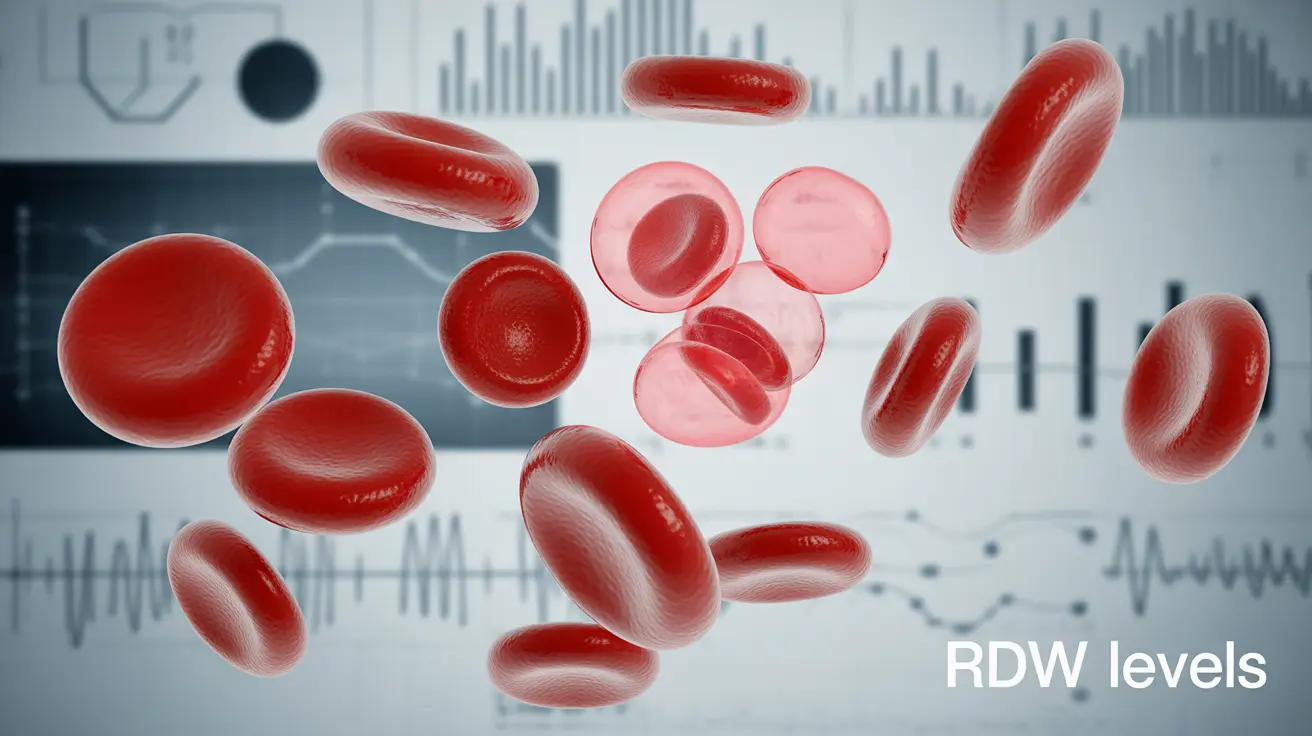Red cell distribution width (RDW) is a crucial blood test measurement that helps healthcare providers evaluate the variation in red blood cell size. Understanding what level of RDW is dangerous can be vital for identifying underlying health conditions and seeking appropriate medical care.
This comprehensive guide will explore dangerous RDW levels, their implications for your health, and when you should seek immediate medical attention. We'll also discuss various factors that can affect your RDW results and potential treatment approaches.
Normal vs. Dangerous RDW Levels
A normal RDW typically ranges between 11.5% and 14.5%. Values outside this range may indicate various health concerns:
- Mild elevation: 14.5% to 17.0%
- Moderate elevation: 17.0% to 20.0%
- Severe elevation: Above 20.0%
When RDW levels exceed 20%, this is generally considered dangerous and requires prompt medical evaluation. However, the interpretation of RDW results should always be done in conjunction with other blood test parameters and clinical symptoms.
Understanding High RDW Results
Common Causes of Elevated RDW
Several health conditions can lead to dangerous RDW levels:
- Severe anemia
- Vitamin deficiencies
- Inflammatory conditions
- Blood disorders
- Liver disease
- Certain types of cancer
Associated Blood Test Parameters
Healthcare providers typically evaluate RDW alongside other blood markers, particularly Mean Corpuscular Volume (MCV), to make accurate diagnoses. This combined analysis helps determine the specific type of blood disorder or underlying condition present.
Nutritional Factors and RDW Levels
Nutritional deficiencies often contribute to elevated RDW levels. Key nutrients that affect RDW include:
- Iron
- Vitamin B12
- Folate
- Vitamin D
Addressing these deficiencies through proper nutrition or supplementation can help normalize RDW levels in many cases.
Managing Elevated RDW Levels
Medical Interventions
Treatment approaches for dangerous RDW levels depend on the underlying cause and may include:
- Vitamin and mineral supplementation
- Iron therapy
- Treatment of underlying conditions
- Regular blood test monitoring
- Specialized medications as prescribed
Lifestyle Modifications
Several lifestyle changes can help maintain healthy RDW levels:
- Consuming a balanced, nutrient-rich diet
- Regular exercise
- Stress management
- Adequate hydration
- Avoiding smoking and excessive alcohol
Frequently Asked Questions
What RDW level is considered dangerous and requires immediate medical attention?
RDW levels above 20% are generally considered dangerous and require immediate medical attention. However, any value above 14.5% should be evaluated by a healthcare provider, especially if accompanied by symptoms or other abnormal blood test results.
What health conditions can cause a high RDW reading in a blood test?
High RDW readings can be caused by various conditions including severe anemia, nutritional deficiencies, inflammatory diseases, blood disorders, liver disease, and certain cancers. The specific cause needs to be determined through additional testing and medical evaluation.
How is an abnormal RDW result interpreted along with other blood tests like MCV?
Healthcare providers interpret RDW results alongside MCV and other blood parameters to determine the specific type of blood disorder present. For example, high RDW with low MCV might indicate iron deficiency anemia, while high RDW with high MCV could suggest vitamin B12 deficiency.
Can a high RDW indicate nutritional deficiencies such as iron, vitamin B12, or folate?
Yes, elevated RDW levels often indicate nutritional deficiencies, particularly in iron, vitamin B12, or folate. These deficiencies affect red blood cell production and maturation, leading to variations in cell size and increased RDW values.
What lifestyle or dietary changes can help manage elevated RDW levels?
Managing elevated RDW levels often involves dietary improvements such as increasing iron-rich foods, consuming adequate B vitamins, maintaining proper hydration, and following a balanced diet. Regular exercise, stress management, and avoiding smoking and excessive alcohol can also help normalize RDW levels.




